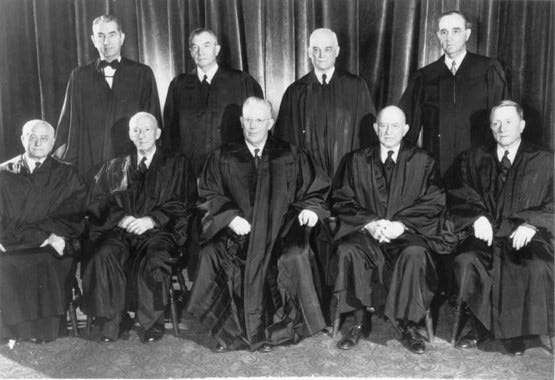The Cases that Led to Brown
Five lawsuits that resulted in the decision to desegregate our nation's schools

Here is background on the five cases that were consolidated into Brown v. Board of Education, the landmark 1954 U.S. Supreme Court ruling that led to the desegregation of our nation’s schools.
The cases — from South Carolina, Virginia, Kansas, Delaware and the District of Columbia — were bundled together in 1952, allowing the court to consider school segregation as a national case rather than an individual one. A petition is expected to be filed in August to rename the case Briggs v. Elliott — the first case filed — rather than Brown.
Belton (Bulah) v. Gebhart
Two lawsuits with the same issues — families frustrated by inequitable conditions — were filed in Delaware in 1951. At the state's request, the cases were heard at the Delaware Court of Chancery, but the move backfired. The chancellor said the 11 student plaintiffs had been denied equal protection under the law and ordered they must be immediately admitted The school board appealed the decision to the U.S. Supreme Court. The state's segregation law was not struck down, but this was the only case of the five to bring relief to plaintiffs at the state level.
Bolling v. Sharpe
In 1950, a parent group sued to get 11 young African-American students admitted to John Philip Sousa Junior High School in Washington, D.C. The students were turned away, although the school had several empty classrooms. NAACP attorneys appealed when the U.S. District Court ruled segregated schools were constitutional in our nation’s capital. In 1954, the U.S. Supreme Court removed Bolling v. Sharpe from the Brown decision and rendered a separate opinion on the case because the 14th Amendment was not applicable in the District.
Briggs v. Elliott
Named for Harry Briggs, one of 20 parents who sued the Clarendon County, S.C., school board, the lawsuit was filed in November 1949 by the NAACP's Thurgood Marshall. Initially, black parents asked the county to provide school buses for their children, but Judge J. Waties Waring urged the plaintiffs to challenge segregation itself. Marshall and the NAACP presented a vast array of social science evidence showing how segregation harmed Black school children, including evidence from sociologist Kenneth Clark's controversial "Doll Study." Waring's 28-page dissent in an unsuccessful district court battle is considered a blueprint for much of Supreme Court's decision in Brown.
Brown v. Board of Education
Thirteen parents, waiting with local lawyers and representatives from the NAACP Legal Defense and Educational Fund, sued to force children to be admitted to their neighborhood schools in February 1951. At the time, black children were required to attend schools that were designated for African Americans. The request was denied in the U.S. District Court, but the panel of judges agreed with psychological evidence that segregation adversely affected African-American children. The U.S Supreme Court later quoted the findings in its 1954 opinion.
Davis v. Prince Edward County
After 450 students participated in a two-week student strike to protest deplorable conditions at Robert R. Moton High School in Farmville, Va., the NAACP sued to end segregation in the state’s schools in May 1951. A three-judge panel at the U.S. District Court unanimously rejected the students’ request, which was appealed to the Supreme Court. Following Brown and the Brown II decision, a 1955 ruling that required districts to desegregate with "all deliberate speed," white Virginians launched a massive resistance campaign. In 1959, the Prince Edward County Board of Supervisors refused to appropriate funds lo the school board; the public schools remained closed for five years.
